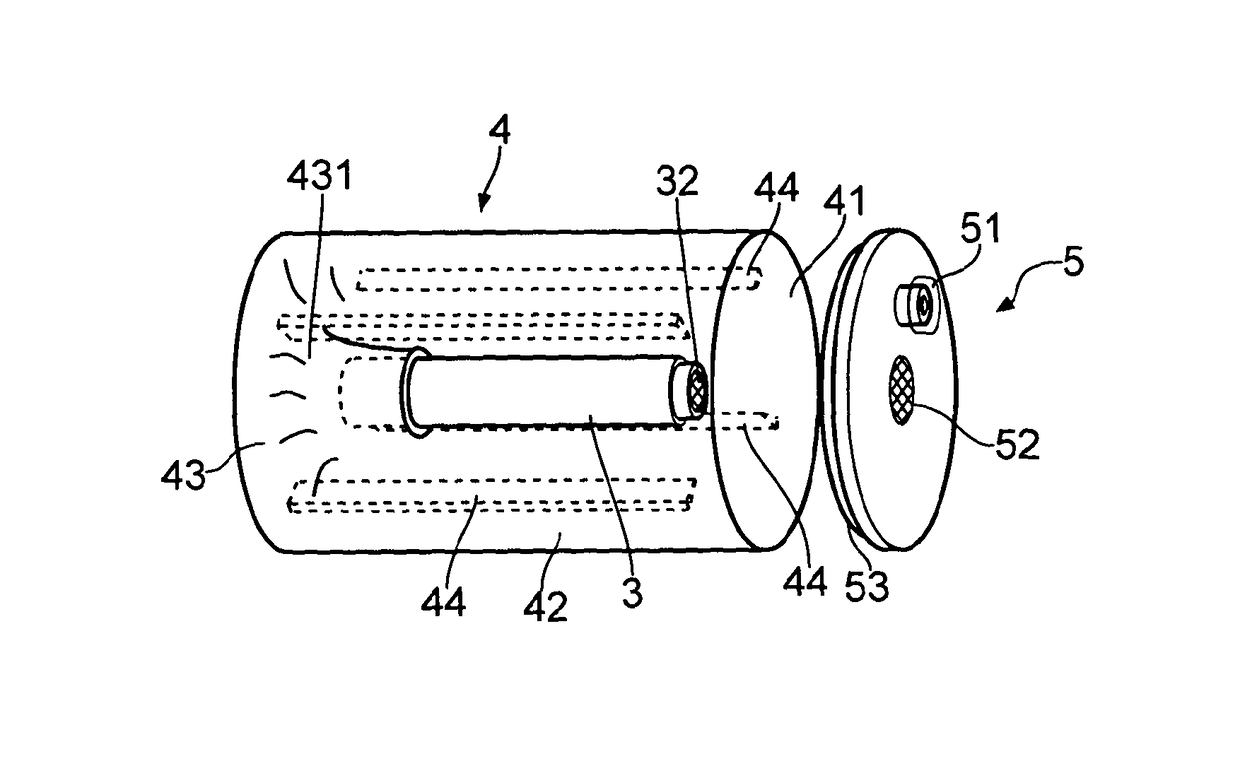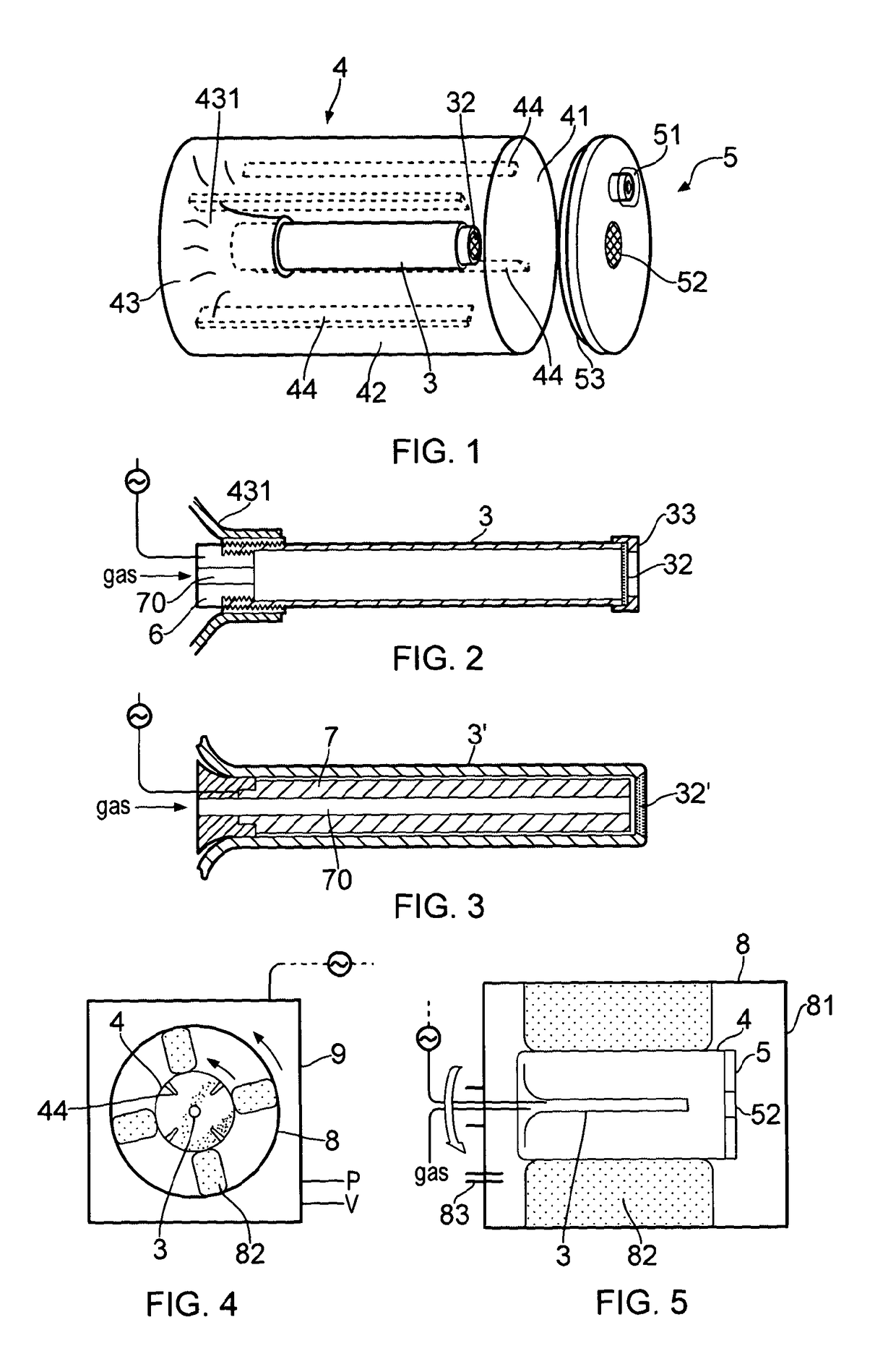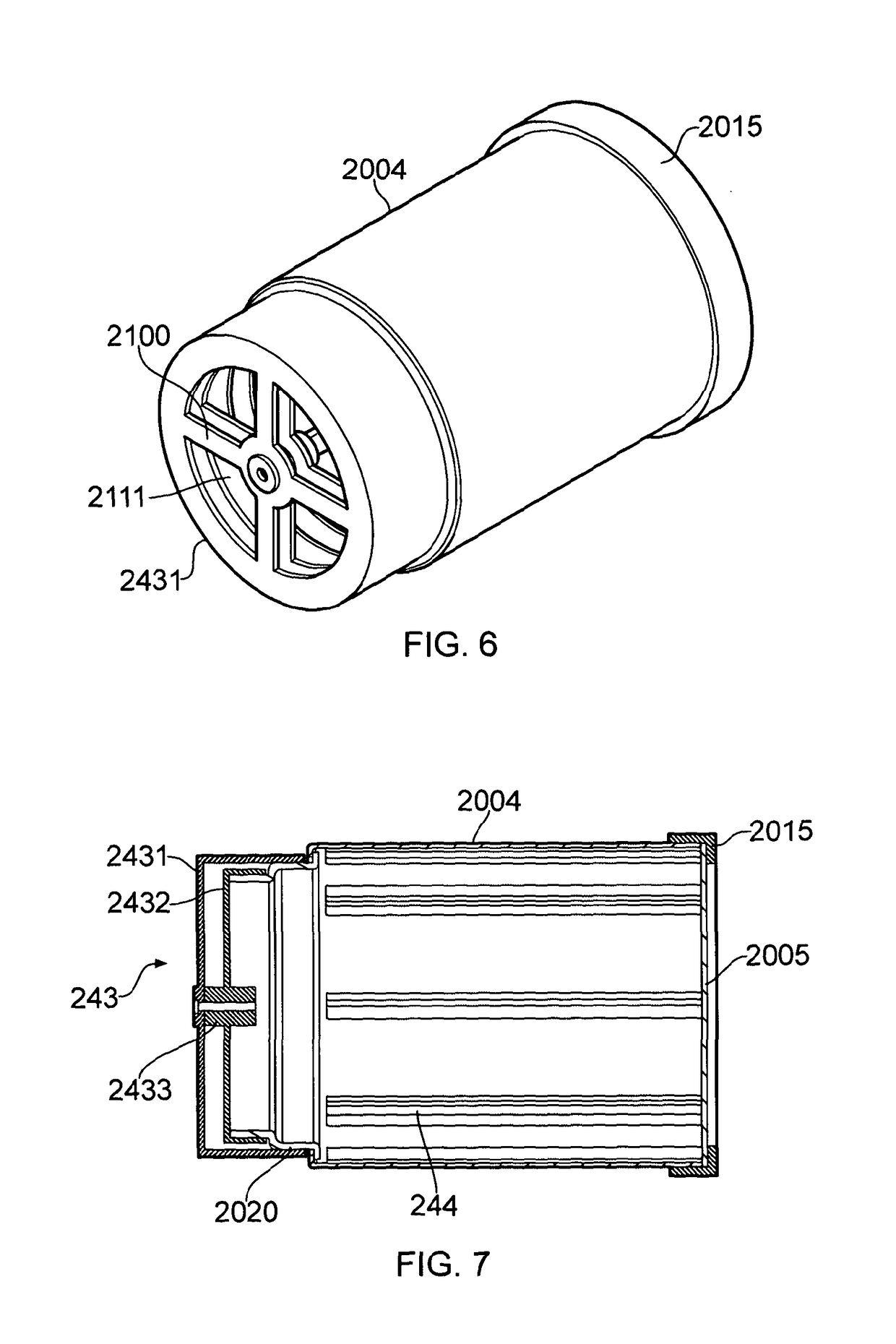Particulate materials, composites comprising them, preparation and uses thereof
a technology of composite materials and particles, which is applied in the field of particles and composite materials, can solve the problems of difficult dispersion, formidable obstacle to dispersion, and limited industrial use, and achieves good results
- Summary
- Abstract
- Description
- Claims
- Application Information
AI Technical Summary
Benefits of technology
Problems solved by technology
Method used
Image
Examples
second apparatus embodiment
[0145]FIGS. 6 and 7 show a further treatment drum suitable for treatment of particles comprising CNTs, or graphitic granules. It has a cylindrical drum wall 2004 of metal e.g. steel or aluminium to act as counter-electrode. It is to be mounted for rotation in a vacuum chamber, e.g. on support rollers.
[0146]The end walls are insulative. A rear end wall is of glass or inert plastics e.g. PTFE and comprises inner and outer layers 2432,2431 between which a filter layer (not shown) is clamped. This end wall filter module has large windows 2111 occupying more than half its area so that gas flow speed through the filter is low. This is found to improve plasma stability i.e. inhibit arcing. The centre of the rear end wall has a holder for the axial electrode, not shown. The electrode is a tubular metal electrode along which process gas is fed in use. It may be housed in a sheath.
[0147]A set of eight non-conductive (plastics) lifter vanes 244 is mounted around the inside of the metal drum. T...
third apparatus embodiment
[0148]FIG. 24 shows a third embodiment of the treatment drum, in slightly more detail. This is a larger drum, volume about 60 liters and without interior baffles or lifters i.e. so that the bed of contact bodies e.g. steel balls will reside at the bottom during treatment. The tubular central electrode is used for feeding gas, through a brass sintered plug at the front end (not shown). The front wall is formed into a cone with a limited opening (having a window plug, not shown) to facilitate emptying out of product after treatment. The rear wall is a filter, as before. Elements of the mechanical drive, vacuum communication and gas feed are also shown, to assist the skilled reader. The gas flow through the large volume of the system is relatively slow, and we find there is no tendency for the very fine particulate product to escape through the filter i.e. the product is not “carried out” by gas flow.
example 1
[0155]The MWCNT material as supplied, i.e. as manufactured, is seen in the SEM images FIGS. 8 and 9 and its particle size distribution is in FIG. 12(a). These are large, tightly aggregated granules approaching 1 mm (1000 μm) in size. The treated material is seen in the SEM images of FIGS. 10 and 11 and its particle size distribution is in FIG. 12(b). It can readily be seen that the particle size has been drastically reduced to a range between 1 and 10 μm, i.e. there has been substantial de-aggregation, and also that the treated material has a substantial proportion of discrete, liberated CNTs, visible in the SEM images.
PUM
| Property | Measurement | Unit |
|---|---|---|
| thickness | aaaaa | aaaaa |
| diameter | aaaaa | aaaaa |
| diameter | aaaaa | aaaaa |
Abstract
Description
Claims
Application Information
 Login to View More
Login to View More - R&D
- Intellectual Property
- Life Sciences
- Materials
- Tech Scout
- Unparalleled Data Quality
- Higher Quality Content
- 60% Fewer Hallucinations
Browse by: Latest US Patents, China's latest patents, Technical Efficacy Thesaurus, Application Domain, Technology Topic, Popular Technical Reports.
© 2025 PatSnap. All rights reserved.Legal|Privacy policy|Modern Slavery Act Transparency Statement|Sitemap|About US| Contact US: help@patsnap.com



